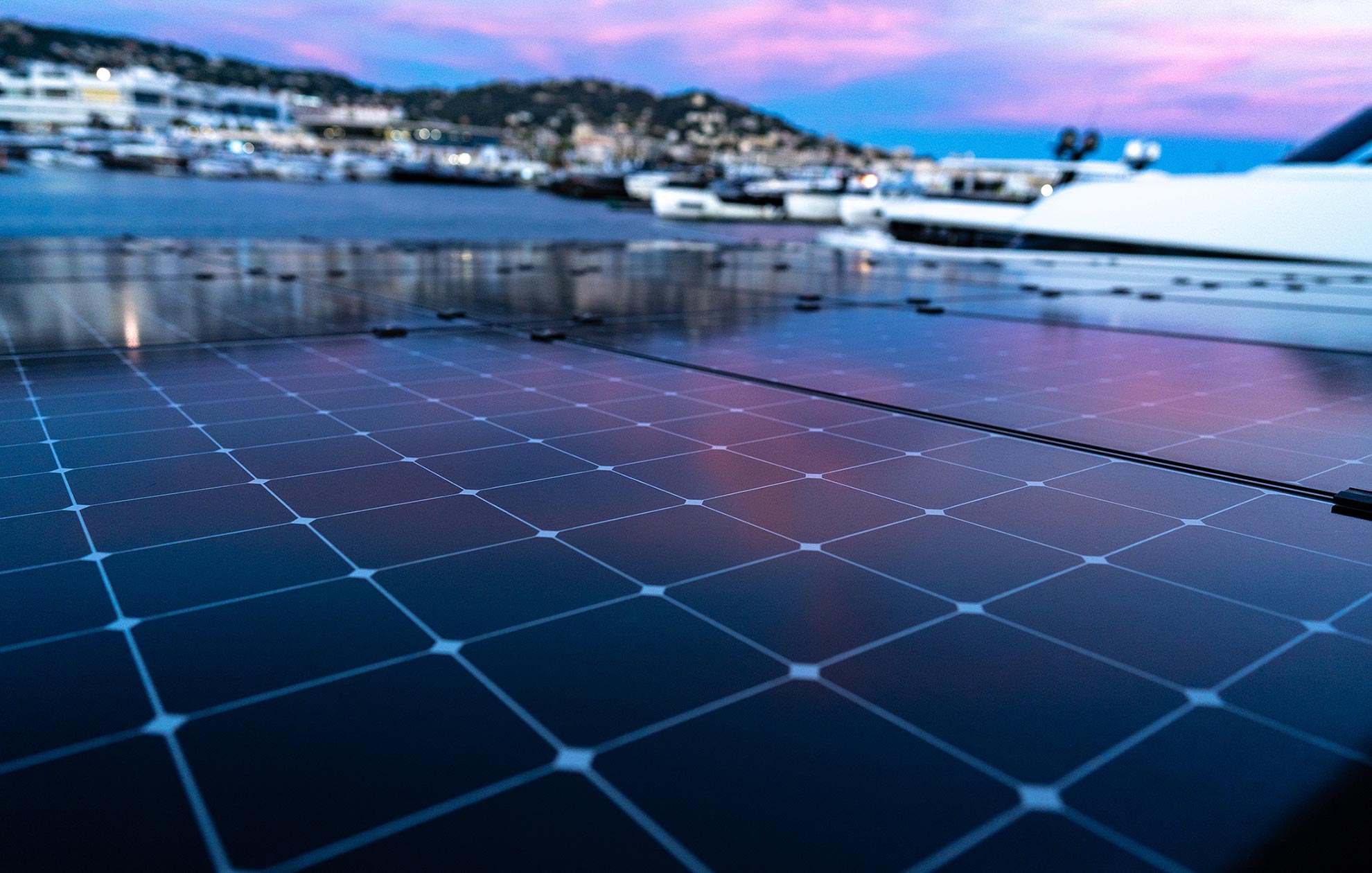Why a Solar Powered Yacht?

Solar power is the perfect energy source for a yacht. It brings us closer to the beauty and power of nature. It’s even better than sailing, as it combines the advantages of sailing and motor boating in an unprecedented way.
The Problem
A sailing boat uses clean energy only while sailing, which, in an average holiday destination, happens at most 50% of the time. The rest of the time, it relies on diesel for propulsion and power generation for all household appliances. Large motor yachts, and to a certain extent sailing yachts, burn high amounts of fossil fuels, creating harmful effects on the environment. Although their goal is to connect owners with the seas, they heavily pollute the waters they travel.
Moreover, diesel engines require time-consuming maintenance and generate fumes, vibrations, and noise during operation, disconnecting the onboard experience from the natural surroundings.
How to harness solar energy?
Capturing significant amounts of solar energy requires a large area of photovoltaic cells positioned effectively towards the sun. Modern motor and sailing boat designs often don’t allow for enough solar panels in an unobstructed area, free from shade and angled correctly.
Here’s a physics fact that may come as a surprise: partly shaded panels produce almost no power, while fully shaded ones produce at least some.
A large, unobstructed horizontal surface is ideal, but unfortunately not feasible on most modern sailing or motor boats.
The sun is more reliable than the wind. Sailors prefer fair weather and sunny destinations over windy ones. Sails can only be used for propulsion when the wind is just right, and they can’t power household appliances. With a sail, you cannot cook spaghetti, grill a steak or cool down your beer!
Wind generators are also inefficient while sailing due to turbulence and are rarely effective at anchor since sailors seek protected bays with no or little wind.
Consider a simple calculation:
- A wind generator that produces a maximum of 400W costs about €2,000 and generates approximately 2,000Wh per day in a windy area.
- A solar panel of the same capacity costs about €500 and also generates around 2,000Wh per day on a sunny day.
To generate about 200 watts, a wind generator requires 20 knots of wind, which is rare and unpleasant at anchor. A solar panel costs a quarter of the price of a wind generator, is quieter, and requires no maintenance. Plus, more solar panels can be fitted on a boat than wind generators.
Solar panels offer a higher average energy harvest than wind generators of the same size and are safer, more cost-effective, and more reliable.
The solution: boats designed and built for solar energy
For an Atlantic crossing, sails might make sense, but for the average yacht owner or charterer, in typical holiday conditions, solar energy is far more efficient. Photovoltaic panels deliver clean, environmentally friendly energy, are cheap, safe, require no maintenance, and produce no noise, fumes, or vibrations. No other sustainable energy source can compete with properly installed solar panels.
The logical conclusion is to equip a boat with photovoltaic panels that transform solar radiation into energy, used for both propulsion and powering household appliances.
Unfortunately, many boats have poorly placed solar panels, often shaded by masts, booms, and antennas, or installed vertically on the sides, which is the worst location! Using sails alongside solar panels is also counterproductive as sails cast shade on the panels, reducing their efficiency.
Converting a sailing or motor boat to solar power by cutting the mast or simply adding panels is ineffective: a boat must be designed from scratch for this purpose.
Next up, we will explore “mild hybrid” and “autonomous solar-electric” propulsion, explaining the differences and what to consider when deciding on an electrically powered yacht.
Stay tuned!
